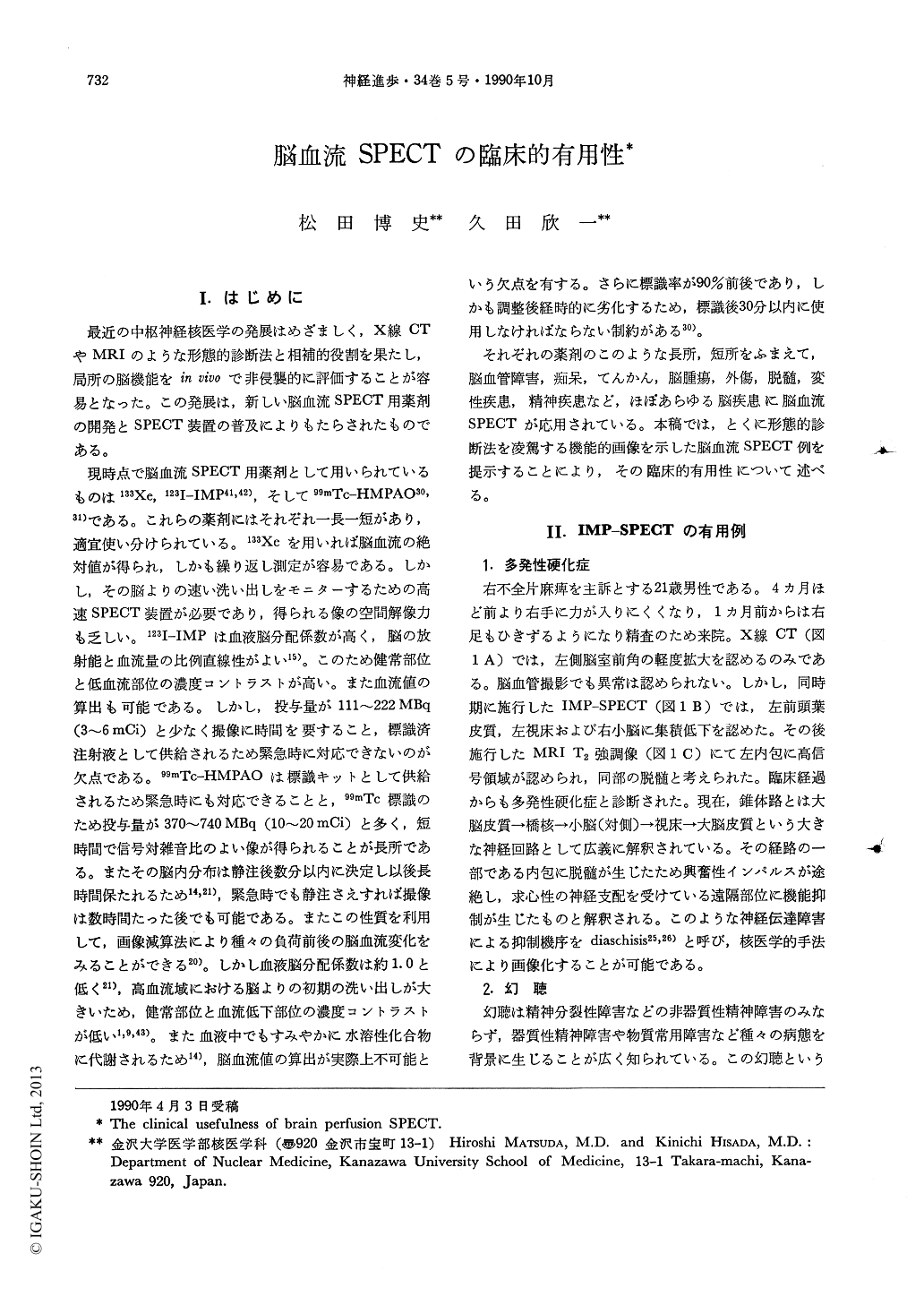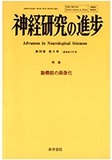Japanese
English
- 有料閲覧
- Abstract 文献概要
- 1ページ目 Look Inside
I.はじめに
最近の中枢神経核医学の発展はめざましく,X線CTやMRIのような形態的診断法と相補的役割を果たし,局所の脳機能をin vivoで非侵襲的に評価することが容易となった。この発展は,新しい脳血流SPECT用薬剤の開発とSPECT装置の普及によりもたらされたものである。
現時点で脳血流SPECT用薬剤として用いられているものは133Xe,123I-IMP41,42),そして99mTc-HMPAO30,31)である。これらの薬剤にはそれぞれ一長一短があり,適宜使い分けられている。133Xeを用いれば脳血流の絶対値が得られ,しかも繰り返し測定が容易である。しかし,その脳よりの速い洗い出しをモニターするための高速SPECT装置が必要であり,得られる像の空間解像力も乏しい。123I-IMPは血液脳分配係数が高く,脳の放射能と血流量の比例直線性がよい15)。このため健常部位と低血流部位の濃度コントラストが高い。また血流値の算出も可能である。しかし,投与量が111~222MBq(3~6mCi)と少なく撮像に時間を要すること,標識済注射液として供給されるため緊急時に対応できないのが欠点である。99mTc-HMPAOは標識キットとして供給されるため緊急時にも対応できることと,99mTc標識のため投与量が370~740MBq(10~20mCi)と多く,短時間で信号対雑音比のよい像が得られることが長所である。
The clinical value of measuring regional brain perfusion has been recognized. Local variations in perfusion are associated with many brain diseases such as stroke, tumors, epilepsy, dementia, and psychiatric illness, and any technique which provides an image of brain perfusion is of particular interest. Radionuclide tracers have been used for this purpose for many years, but it is only recently that potential for three-dimensional imaging of brain perfusion on a routine diagnostic basis has come close to being realized. Several tracers for evaluating brain perfusion have been developed for a Single Photon Emission Computed Tomography (SPECT) technique that uses conventional gamma ray production and detection. At present, 133Xe 123I-IMP, and 99mTc-HMPAO are commercially available as brain perfusion SPECT tracers. Each tracer has both advantages and disadvantages as follows;

Copyright © 1990, Igaku-Shoin Ltd. All rights reserved.


